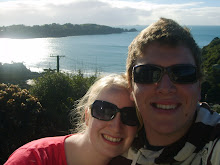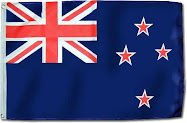On 7 July 1985 the Rainbow Warrior, flagship of the Greenpeace Organisation, an international body concerned with conservation and environmental issues, arrived in Auckland and tied up at Marsden Wharf.
On the night of 10 July 1985 disaster struck. Shortly before midnight two high explosive devices, attached to the hull of the Rainbow Warrior some time previously, detonated within the space of a few minutes. The force of the explosions was such that a hole eight feet in size was opened below the waterline at the engine room. The vessel sank within minutes.
Earlier that evening approximately 30 people had been on board the ship attending a birthday party and at the time of the explosion 12 people, including the captain, were still present. Only 11 made it to the safety of the wharf. Fernando Pereira, crew member and official photographer was drowned while attempting to retrieve photographic equipment from his cabin.
The incident was immediately treated as a homicide enquiry and under the guidance of Detective Superintendent Allan Galbraith there began one of the most far reaching investigations this country has ever seen. As a major international scandal it was, ironically, to give Greenpeace far more publicity than would have occurred had the ill fated Rainbow Warrior completed her voyage to Muroroa Atoll.
The discovery of an abandoned rubber Zodiac dinghy and an outboard motor and the sighting of a blue and white campervan, led to the interview of a French speaking couple two days later by the Police, and their subsequent arrest on 15 July.
Although initially identified as Alain Jacques Turenge and his wife Sophie Frederique Clare Turenge, inquiries revealed their true identities to be Major Alain Mafart, aged 35 and Captain Dominique Prieur, aged 36.
Serving as commissioned officers in the French Armed Forces, they had been detailed to assist members of the French Security Forces to ensure the much publicised voyage of the Rainbow Warrior to French territorial waters did not eventuate. To prevent the voyage occurring the vessel had to be so extensively damaged that repairs could not be completed in time for the voyage to begin.
What the French had failed to take into account was the small population of New Zealand and the uniqueness of a bombing. Extensive media coverage brought out the best in New Zealanders. The public was horrified by the bombing and they flooded the Police with information. When linked with information obtained by New Zealand detectives in New Caledonia, Norfolk Island, Australia, Switzerland, France and England this proved without any doubt the major role played by the French Security Service in the bombing and the subsequent death of Fernando Pereira.
Police investigations soon led to the yacht Ouvea, which had been hired from Noumea to transport the explosives and French agents to New Zealand. The yacht was never located and is thought to have been scuttled.
The positioning and successful detonation of the explosives indicated those responsible were trained and expert in underwater warfare. A sighting of Mafart and Prieur in possession of the Zodiac dinghy led to their early apprehension by New Zealand Police. Initially arrested on charges relating to false passports, they were later charged with arson, conspiring to commit arson on the Rainbow Warrior and with the murder of Pereira.
Inquiries were however to suggest their role had only been one of support for those who had placed the explosive devices and, as part of their support role, they had picked up and transported from the rendezvous point at Hobson Bay one of those responsible for the placement of the explosive.
In the weeks leading up to the depositions hearing, media interest was fanned by conflicting statements from the French Government. On 27 August President Mitterrand of France had released a report which fully exonerated the French Secret Services. The correct names of the Ouvea crew, who presented themselves to the French police in Paris were contained in the report when it was published. The French Government refused a request for their extradition to New Zealand. The French Press was not satisfied and a number of prominent French papers continued to pressure the Government for the truth. Their persistent enquiries led to the inescapable conclusion that their own Government was responsible. Following a further round of official denials, Monsieur Hernu, the Defence Minister resigned and on 22 September Prime Minister Laurent Fabius admitted, in the face of indisputable evidence, that the French Secret Service had ordered the attack on the Rainbow Warrior.
On Monday 4 November 1985, Major Alain Mafart and Captain Dominique Prieur appeared in the Auckland District Court for the start of a deposition hearing after earlier pleading Not Guilty to the charges of arson, conspiring to commit arson and murder. Recently refurbished, the ornate old Auckland High Court building was selected for the trial.In front of the public and assembled journalists from a variety of countries Mafart and Prieur dramatically changed their pleas. Stunned, those present listened as they entered Guilty pleas, not only to arson, but also to a reduced charge of manslaughter. The case of the century, predicted to last weeks and to cost thousands of dollars, was over within half an hour. The Solicitor General Mr Paul Neazor, Q.C., indicated to Judge Gilbert that the Crown was prepared to accept a plea on the lesser charge of manslaughter as, with the evidence available it could not be established that Mafart and Prieur were personally responsible for the placing of the explosive devices on the Rainbow Warrior, nor that they intended anyone should be killed or injured.
On Friday, 22 November Mafart and Prieur again appeared in the Auckland High Court and were sentenced to ten years imprisonment on the charge of manslaughter and seven years imprisonment on the charge of arson. In delivering judgement the Chief Justice Sir Ronald Davison gave a clear indication of his feelings on the possibilty of early deportation stating "People who come to this country and commit terrorist activities cannot expect to have a short holiday at the expense of our Government and return home as heroes".
The Rainbow Warrior was refloated on 21 August 1985 and transported to Devonport Naval base in Auckland for detailed examination where a close analysis resulted in the reluctant decision by Greenpeace to scuttle the vessel, the damage being too extensive to repair.
Six months after the bombing Auckland Police staff were still working to locate and bring to trial those persons who attached the actual devices to the ill-fated Rainbow Warrior.
 Built in 1898 for use as offices by the Northern Steamship Company, one of the leading inland-shipping businesses in northern New Zealand at the time, this Historic Places Trust Category 1 building is an important piece of Auckland's history.
Built in 1898 for use as offices by the Northern Steamship Company, one of the leading inland-shipping businesses in northern New Zealand at the time, this Historic Places Trust Category 1 building is an important piece of Auckland's history. Situated in a prime position between the wharves and the 1880s railway station, the original building was two storeys with an ornate facade seaward side emblazoned with the company name, with a third storey added in 1920 as the business prospered. Internal alterations followed as the company declined post-war and offices were let, until the company finally closed in the 1970s.
The Northern Steamship Company came about as an amalgamation of firms in 1881 running freight and passenger services in the Upper North Island, vital for the early industries such as kauri, timber and farming, later extending these nationwide.
Situated in Quay Street, Auckland, this heritage building required an extensive interior and exterior repaint to provide protection against the elements. Exterior timber details, windows, sashes and sills were cleaned with care then treated with Resene TimberLock preserver/conditioner to lock in loose fibres, before priming in Resene Wood Primer and topcoating in Resene Super Gloss enamel in a palette of Resene Nikau (deep green) on windows, Resene Half Tapa (urban grey) on sashes and Resene Half Masala (greyed brown) on sills.The aged interior painted plaster render over brick walls and mouldings was cleaned then primed with Resene Concrete Primer and finished in two coats of Resene X-200 waterproofing membrane and Resene Zylone Sheen low sheen acrylic. Hues of Resene Donkey Brown (mid brown) on arches and walls, Resene Tuna (dignified grey) on sills and Resene Eighth Castle Rock (smoky neutral) on mouldings grace the interior and work sympathetically with the rough brick. With a wealth of history to preserve, fire ratings were a key consideration in product selection to minimise the risk of harm to the structure and its inhabitants.
Now home to an eclectic mix of tenants, the Northern Steamship building is part of the hum of the modern city.





No comments:
Post a Comment